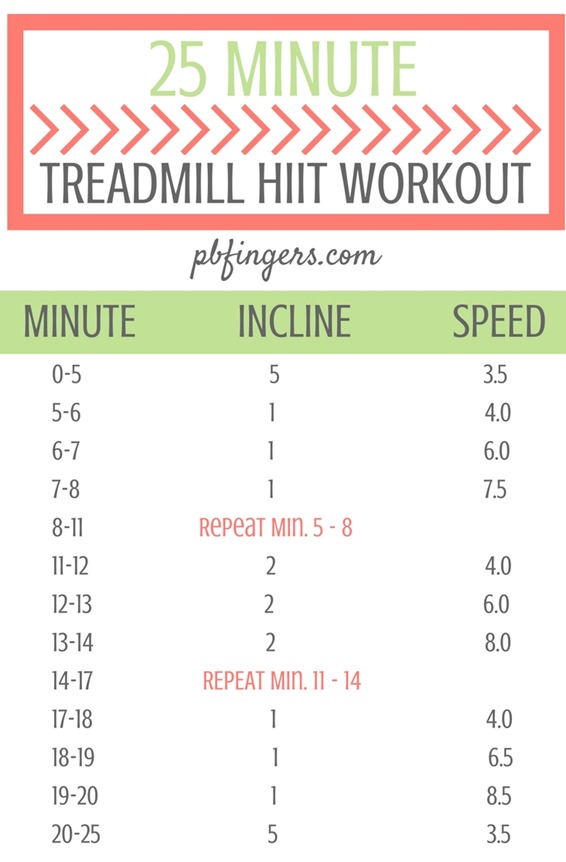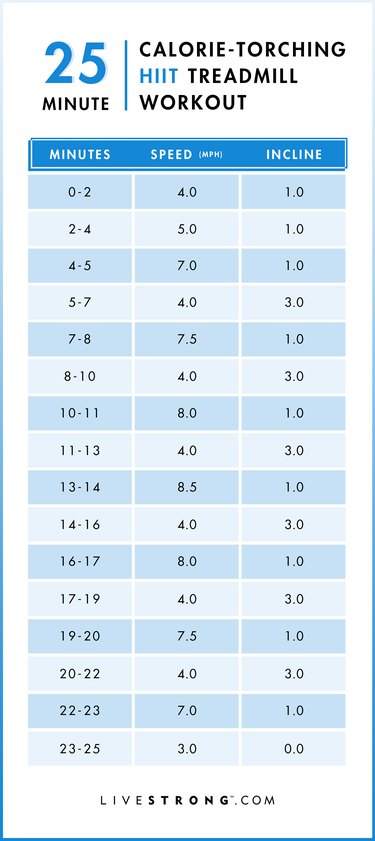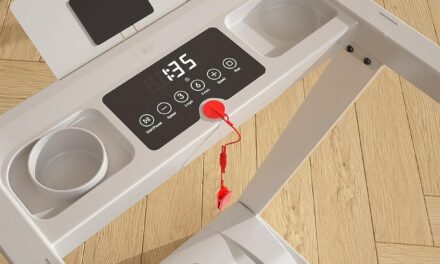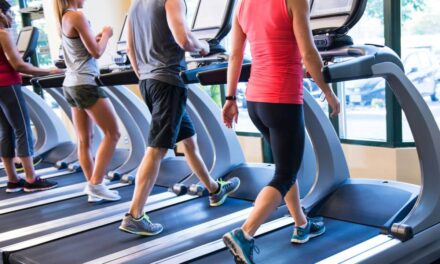Looking to up your fitness game and get the most out of your treadmill workouts? Look no further than HIIT, or High-Intensity Interval Training. In this article, we’ll show you the ins and outs of how to do HIIT on a treadmill, giving you a step-by-step guide to maximizing your time and effort on this popular exercise machine. With our tips and techniques, you’ll be able to amp up your cardio, burn calories, and achieve your fitness goals in no time. So, grab your running shoes and get ready to sweat with our comprehensive guide on how to do HIIT on a treadmill.

What is HIIT?
Definition of HIIT
HIIT stands for High-Intensity Interval Training, a popular fitness training method that involves alternating between intense bursts of exercise and short recovery periods. This form of exercise is designed to challenge and push your body to its limits, resulting in an efficient and effective workout.
Benefits of HIIT
HIIT offers numerous benefits for both your physical and mental well-being. Some of the key advantages of incorporating HIIT into your fitness routine include:
- Increased calorie burn: The intense nature of HIIT workouts allows you to burn more calories in a shorter amount of time compared to traditional cardiovascular exercises.
- Improved cardiovascular health: HIIT helps to strengthen your heart and increase your overall endurance, improving your cardiovascular health in the process.
- Enhanced fat burning: HIIT has been shown to be highly effective in reducing body fat, particularly abdominal fat.
- Time efficiency: HIIT workouts typically last around 20-30 minutes, making them a great option for those with busy schedules.
- Boosted metabolism: The intense nature of HIIT workouts helps to elevate your metabolic rate even after the workout is complete, allowing you to continue burning calories throughout the day.
- Increased muscle tone: HIIT incorporates strength exercises along with cardiovascular movements, helping to build lean muscle mass and improve overall muscle tone.
- Versatility: HIIT can be adapted to various exercises and activities, making it suitable for people of all fitness levels and preferences.
Getting Started with HIIT on Treadmill
Equipment Needed
To get started with HIIT on a treadmill, you’ll need a few essential pieces of equipment, including:
- A quality treadmill with adjustable speed and incline settings.
- Comfortable workout clothes and proper athletic shoes.
Choosing the Right Treadmill
When selecting a treadmill for your HIIT workouts, consider the following factors:
- Motor power: Make sure the treadmill has a powerful motor to withstand high speeds during your intense intervals.
- Speed range: Look for a treadmill that offers a wide range of speed settings to accommodate both your warm-up and sprint intervals.
- Incline capabilities: Opt for a treadmill that has adjustable incline settings to simulate varying terrains and increase the intensity of your workouts.
- Stability and durability: Ensure the treadmill is sturdy and well-constructed to handle the high-intensity demands of your workouts.
Warm-up Exercises
Before diving into your HIIT workout on the treadmill, it’s crucial to properly warm up your body. Warm-up exercises prepare your muscles and joints for the intense activity ahead, reducing the risk of injury and maximizing performance. Some effective warm-up exercises for HIIT on a treadmill include:
- Walking or slow jogging for 5-10 minutes
- Dynamic stretches targeting major muscle groups
- Light cardiovascular exercises such as jumping jacks or high knees

This image is property of www.pbfingers.com.
Creating Your HIIT Workout Plan
Setting Your Goals
Before embarking on your HIIT journey, it’s essential to establish clear and achievable goals. Whether you’re aiming for weight loss, increased endurance, or improved overall fitness, defining your goals will help you stay focused and motivated throughout your workout plan.
Determining Intervals
HIIT workouts consist of alternating between high-intensity intervals and lower-intensity recovery periods. To determine your intervals, consider the following guidelines:
- High-intensity intervals: These periods should be challenging but sustainable. Aim for a level where you feel you’re working at approximately 80-90% of your maximum effort.
- Recovery intervals: These periods should allow your heart rate to drop, enabling you to catch your breath and recover. Aim for a level where you feel you’re working at approximately 50-60% of your maximum effort.
Choosing Workout Duration
The duration of your HIIT workout will depend on your fitness level and goals. As a general guideline, beginners can start with 20-30 minutes of total workout time, while more advanced individuals can aim for 30-45 minutes. Remember to include both warm-up and cool-down periods in your total workout duration.
HIIT Exercises for Treadmill
Sprint Intervals
One of the most common HIIT exercises on a treadmill is sprint intervals. To perform sprint intervals, follow these steps:
- Start with a warm-up jog or brisk walk for 5-10 minutes.
- Increase the treadmill speed to a challenging sprint pace.
- Sprint for 30-60 seconds, pushing yourself to your maximum effort.
- Reduce the treadmill speed to a comfortable recovery pace.
- Recover for 60-90 seconds, allowing your heart rate to come down.
- Repeat the sprint and recovery intervals for the desired duration of your workout.
Incline Intervals
Incline intervals involve adjusting the incline settings on the treadmill to increase the intensity of your workout. Here’s how to perform incline intervals:
- Begin with a warm-up jog or brisk walk for 5-10 minutes.
- Set the treadmill to a moderate incline.
- Jog or run at a challenging but sustainable pace for 60-90 seconds.
- Reduce the incline and slow down to a recovery pace.
- Recover for 60-90 seconds, allowing your heart rate to decrease.
- Repeat the incline and recovery intervals for the desired duration of your workout.
Variations and Modifications
To keep your HIIT treadmill workouts engaging and effective, consider incorporating variations and modifications. Some ideas include:
- Changing the sprint or recovery duration.
- Incorporating lateral movements or side shuffles.
- Adding resistance bands for an extra challenge.
- Performing intervals at different speeds and incline levels.

This image is property of www.pbfingers.com.
Proper Form and Technique
Maintaining Proper Posture
Maintaining proper posture during your HIIT treadmill workouts is crucial to prevent injuries and ensure optimal performance. Remember the following tips:
- Stand tall with your shoulders relaxed and your head aligned with your spine.
- Engage your core muscles to support your lower back.
- Keep your arms relaxed, swinging naturally with each stride.
Foot Placement
Proper foot placement on the treadmill will help you maintain balance and minimize the risk of injury. Follow these guidelines:
- Place your feet shoulder-width apart for stability.
- Land on the middle of your foot rather than your heel or toe.
- Push off with your toes and propel yourself forward.
Breathing Techniques
Proper breathing techniques are essential for sustaining energy and endurance during your HIIT treadmill workouts. Follow these tips:
- Breathe deeply and rhythmically throughout the workout.
- Inhale through your nose and exhale through your mouth.
- Coordinate your breath with your movements, inhaling during the recovery intervals and exhaling during the intense intervals.
HIIT Workouts for Beginners
Building Endurance
If you’re new to HIIT on a treadmill, it’s essential to build endurance gradually. Start with shorter intervals and gradually increase their duration as you progress. Begin with:
- 30 seconds of high-intensity exercise followed by 60 seconds of recovery.
- Repeat this pattern for 10-15 minutes, focusing on maintaining good form and comfortable effort levels.
Starting with Short Intervals
To ease into HIIT training, start with shorter intervals and gradually increase their length. Try the following:
- 20 seconds of high-intensity exercise followed by 40 seconds of recovery.
- Repeat this pattern for 10-15 minutes, gradually increasing the intensity and duration as you become more comfortable.
Gradually Increasing Intensity
As your fitness level improves, gradually increase the intensity of your HIIT treadmill workouts. Follow these guidelines:
- Increase your sprint or incline speed gradually, aiming for higher levels as your body adapts.
- Shorten your recovery intervals, allowing less time to catch your breath before the next intense interval.
- Once you feel comfortable, experiment with longer overall workout durations.

This image is property of www.snackinginsneakers.com.
Advanced HIIT Workouts
Increasing Speed and Incline
Once you’ve built a solid foundation of fitness and endurance, you can challenge yourself with higher speed and incline settings. Try the following:
- Increase your sprint speed to the maximum setting your body can handle.
- Raise the incline to simulate uphill running, pushing your cardiovascular system and leg muscles to their limits.
- Combine sprint and incline intervals for a truly intense workout.
Adding Resistance
Incorporating resistance into your HIIT treadmill workouts can provide an extra challenge and target different muscle groups. Consider the following options:
- Attach ankle weights or resistance bands for added resistance during your sprint intervals.
- Increase the incline and adjust the resistance on your treadmill if it has those capabilities.
- Incorporate upper body exercises such as push-ups or dumbbell curls during your recovery intervals.
Pyramid Intervals
Pyramid intervals involve gradually increasing and then decreasing the intensity of your intervals. Follow these steps:
- Begin with a warm-up jog or brisk walk for 5-10 minutes.
- Start with a short high-intensity interval, such as 15 seconds.
- Follow it with an equally short recovery interval, such as 15 seconds.
- Gradually increase the duration of each interval, peaking at your desired intensity level.
- Once you reach the peak, gradually decrease the duration of each interval until you’re back to your starting point.
- Finish with a cool-down jog or walk and stretching exercises.
Safety Tips for HIIT on Treadmill
Start Slow and Progress Gradually
When starting HIIT on a treadmill, it’s essential to start at a comfortable pace and gradually increase the intensity and duration of your workouts. Pushing yourself too hard too soon can lead to burnout or injury. Listen to your body and progress at a pace that feels challenging but sustainable.
Listen to Your Body
Listening to your body is key during HIIT workouts. Pay attention to any signs of pain, discomfort, or fatigue. If you experience any unusual symptoms or feel overwhelmed, it’s essential to take a break or modify your workout accordingly. Ignoring your body’s signals can lead to injury and hinder your progress.
Avoid Overtraining
HIIT exercises can be highly intense, so it’s crucial to give your body adequate rest and recovery time. Overtraining can lead to decreased performance, increased risk of injury, and burnout. Aim for at least one or two rest days per week and incorporate other forms of exercise, such as strength training or yoga, to promote overall fitness and balance.

This image is property of img.livestrong.com.
Tracking and Monitoring Progress
Using a Fitness Tracker
Using a fitness tracker or smartwatch can be a useful tool in monitoring your HIIT workouts. These devices can track metrics such as heart rate, distance covered, and calories burned, providing valuable feedback on your progress and performance.
Recording Data
Keep a workout journal or use a fitness app to record details of your HIIT treadmill workouts. Note the duration, speed settings, incline levels, and any modifications you made. This information will help you track your progress over time and identify areas for improvement.
Tracking Heart Rate
Monitoring your heart rate during HIIT workouts can help ensure you’re working in the appropriate intensity zones. Aim for around 80-90% of your maximum heart rate during high-intensity intervals and around 50-60% during recovery intervals. Many fitness trackers and treadmills have built-in heart rate monitors or chest straps that can provide accurate readings.
Recovery and Cool-Down
Importance of Cooling Down
After completing a HIIT treadmill workout, it’s vital to include a proper cool-down period. Cooling down allows your heart rate to gradually return to normal and helps prevent dizziness or lightheadedness. It also aids in reducing muscle soreness and promotes overall recovery.
Stretching Exercises
Incorporating stretching exercises into your cool-down routine can further enhance your recovery and flexibility. Focus on targeting major muscle groups, holding each stretch for 15-30 seconds. Some beneficial post-workout stretches include calf stretches, quad stretches, hamstring stretches, and hip flexor stretches.
Recovery Techniques
In addition to cooling down and stretching, there are various recovery techniques you can utilize to enhance the efficacy of your HIIT treadmill workouts. These techniques include foam rolling, massage therapy, contrast showers, and active rest days. Experiment with different methods to find what works best for your body.
By following these guidelines and incorporating HIIT into your treadmill workouts, you can enjoy the numerous benefits of this effective training method. Remember to start at a comfortable pace, listen to your body, and gradually increase the intensity and duration of your workouts. With consistency and determination, you’ll be on your way to achieving your fitness goals in no time!





